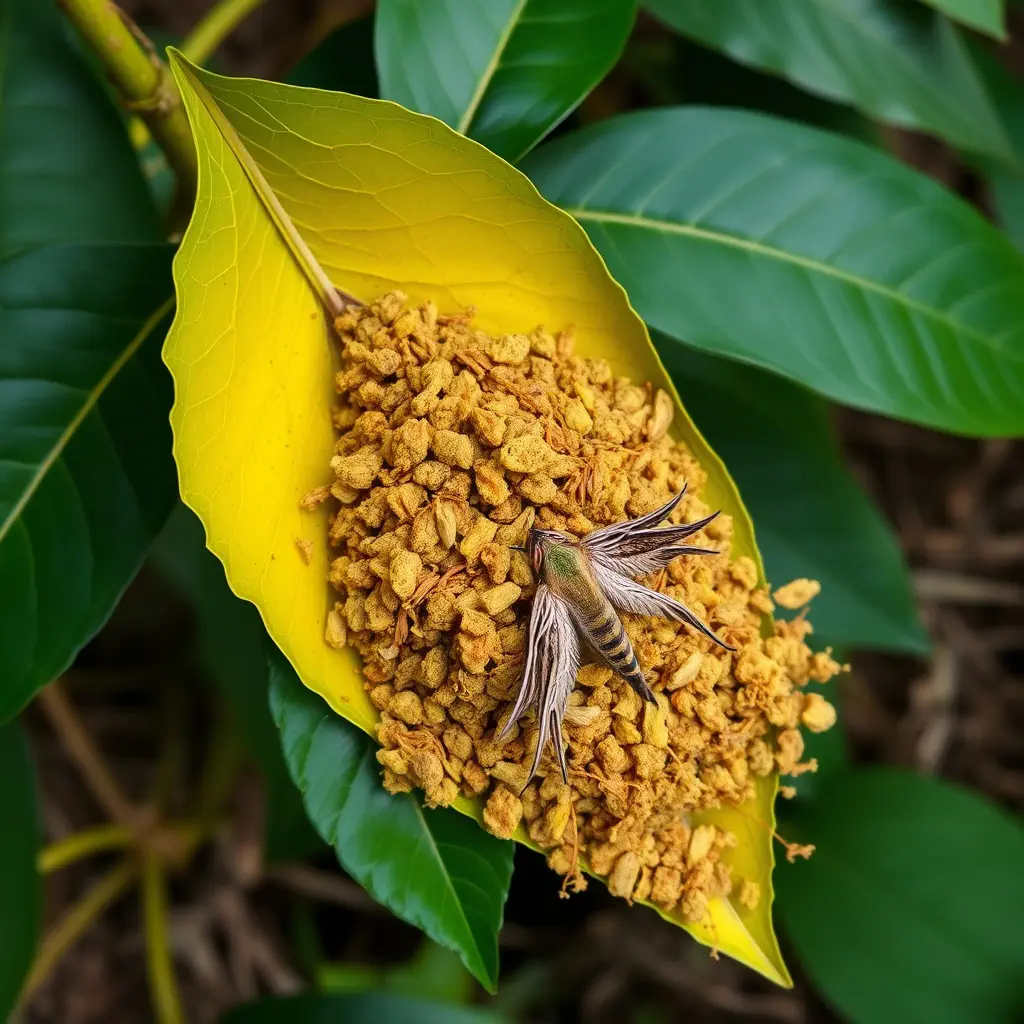Kratom, a tropical tree from Southeast Asia, contains alkaloids like mitragynine and 7-hydroxymitragynine that have been researched for their potential anti-inflammatory properties. These compounds may influence the endocannabinoid system and opioid receptors to address chronic inflammation, which is associated with conditions such as arthritis, heart disease, and certain cancers. As an alternative to conventional pharmaceuticals, kratom's efficacy and mechanisms are currently under investigation. When exploring kratom for inflammation reduction, it's crucial to engage in responsible kratom shopping, which means choosing high-quality, safe products from reputable vendors who provide detailed sourcing and lab-testing information to ensure product purity and potency. New users should start with a low dose and consult healthcare professionals due to potential risks and drug interactions. The ongoing scientific study of kratom's therapeutic potential underscores the importance of careful consideration and safe use when considering it as a natural treatment option for inflammation-related health issues.
Exploring the potential of kratom as a natural remedy for inflammation, this article unravels its anti-inflammatory properties through scientific insights and practical guidance. We delve into how kratom can be a valuable addition to one’s health regimen, with a focus on responsible kratom shopping to ensure safety and efficacy in addressing inflammatory conditions. Join us as we navigate the interplay between kratom and inflammation reduction.
- Understanding Kratom and Its Role in Combatting Inflammation
- The Science Behind Kratom's Anti-inflammatory Properties
- A Guide to Responsible Kratom Shopping for Inflammation Reduction
Understanding Kratom and Its Role in Combatting Inflammation

Kratom, a tropical deciduous tree native to Southeast Asia, has garnered attention in natural health circles for its potential anti-inflammatory properties. The primary active components of kratom are alkaloids known as mitragynine and 7-hydroxymitragynine, which have been studied for their effects on various bodily systems. When it comes to inflammation reduction, kratom may offer a natural alternative to conventional pharmaceuticals. Chronic inflammation is implicated in numerous health issues, including arthritis, cardiovascular diseases, and certain cancers. Kratom’s interaction with the body’s endocannabinoid system and opioid receptors may contribute to its anti-inflammatory effects, making it a subject of ongoing research.
For those interested in incorporating kratom into their wellness regimen for inflammation reduction, careful selection is crucial. Kratom shopping requires due diligence to ensure the product’s quality and safety. It’s essential to source kratom from reputable vendors who provide transparent sourcing and lab-testing results to confirm both purity and potency. Additionally, it’s advisable to start with a lower dosage to assess individual sensitivity and to consult with a healthcare provider before making significant changes to any treatment regimen. As the understanding of kratom evolves, its role in combatting inflammation continues to be an area of scientific interest and self-experimentation among users seeking natural relief.
The Science Behind Kratom's Anti-inflammatory Properties

Kratom, a tropical deciduous tree native to Southeast Asia, has been the subject of increasing scientific scrutiny due to its potential anti-inflammatory properties. The primary active compounds in kratom are alkaloids called mitragynine and 7-hydroxymitragynine, which have been found to exhibit anti-inflammatory effects. These effects are thought to stem from the interaction of these alkaloids with various molecular pathways that regulate inflammation within the body. Scientific studies suggest that kratom may modulate the activity of cytokines, which are key signaling molecules in the immune response and are often elevated in cases of chronic inflammation. By potentially suppressing pro-inflammatory cytokines and enhancing anti-inflammatory ones, kratom could offer relief for those suffering from inflammatory conditions. For individuals seeking natural alternatives to pharmaceutical anti-inflammatory drugs, kratom shopping involves careful consideration of product quality and vendor reliability. Consumers should look for reputable sources that provide lab-tested kratom products to ensure safety and efficacy. When incorporating kratom into one’s health regimen for inflammation reduction, it is crucial to adhere to recommended dosages and consult with healthcare professionals to avoid potential interactions with other medications or underlying health conditions. As the body of research continues to grow, the understanding of how kratom can be used in the context of anti-inflammatory therapy becomes clearer, offering a promising avenue for natural pain relief and inflammation management.
A Guide to Responsible Kratom Shopping for Inflammation Reduction

When exploring kratom as a natural approach for inflammation reduction, responsible shopping is paramount. It’s crucial to source high-quality kratom products from reputable vendors to ensure potency and safety. Kratom shopping requires diligence; begin by researching suppliers with transparent sourcing and laboratory testing practices. This guarantees that the alkaloids present in kratom leaves, which are believed to contribute to its anti-inflammatory properties, are both effective and safe for consumption.
Purchasing kratom should also involve understanding the different strains available, as they may offer varying effects due to their unique alkaloid profiles. Mitragyna speciosa, the botanical name for kratom, has strains like Maeng Da, Bali, and Indo, each potentially offering distinct benefits for inflammation reduction. Consumers should consider their specific needs and consult with healthcare professionals before integrating kratom into their health regimen. Additionally, adhering to the appropriate dosage as suggested by experts is key to achieving the desired anti-inflammatory effects without overstepping. By following these responsible shopping guidelines, individuals can make informed decisions that align with their wellness goals and ensure a safer kratom experience.
In conclusion, the potential of kratom as a natural approach to inflammation reduction offers a promising alternative for those seeking relief from inflammatory conditions. The scientific evidence supporting its anti-inflammatory properties underscores its role in holistic health practices. However, it is imperative to approach kratom shopping with caution, ensuring the sourcing of high-quality, authentic products. By adhering to responsible purchasing guidelines and consulting healthcare professionals, individuals can safely explore the benefits of kratom for inflammation reduction. As research continues to evolve, the understanding of kratom’s efficacy and safety will become more precise, potentially leading to its acceptance in conventional medical treatments.






